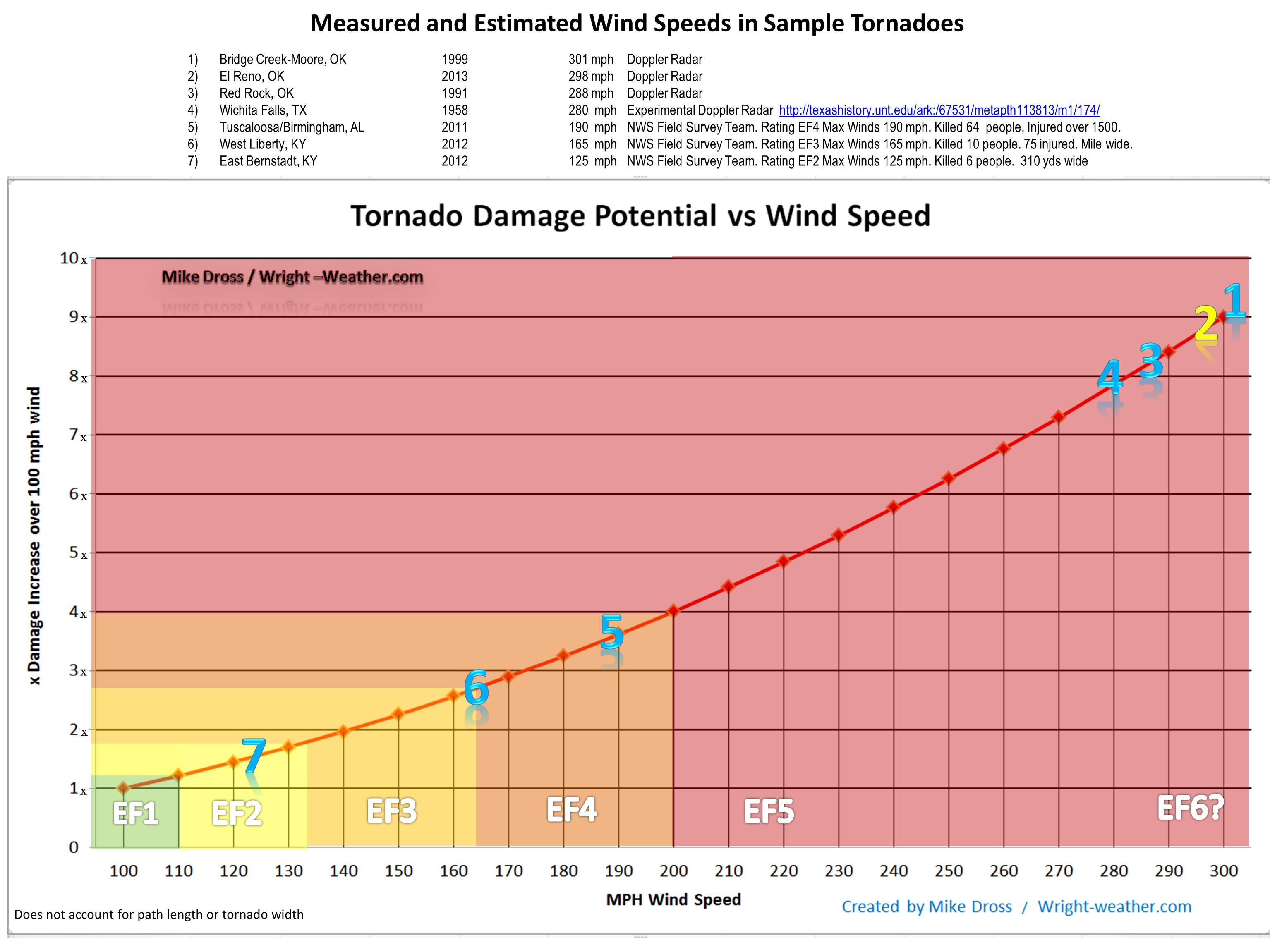With mobile Doppler radar units that have become available in the past 20 years that have extremely high resolution, we have been able to discover tornadic wind speeds in a few of the sampled tornadoes that have approached or in one case exceeded 300 mph. The recent El Reno tornado on May 31st, 2013 was another example of one of these.
Since the force of the wind does not grow linearly, rather it is squared (wind speed^2), these extreme wind speeds over 200 mph can cause unbelievable destruction. Since the kinetic energy is in the same arena as a small nuclear bomb, should one of these ”Super Twisters” hit a densely populated urban environment the destruction would be exponential compared to a lower category tornado. I created a graph to try to visually demonstrate the energy release or damage potential of the 2013 El Reno tornado as compared to just a few other recent tornadoes that have had good NWS storm surveys and tornadoes that had mobile Doppler radar measurements. There is a cluster of Super Tornadoes in the upper right hand portion of the graph that illustrates how much more destruction they can create than an EF3 or EF4 tornado if they encounter buildings, cars or people.
I think it also illustrates that there is a huge range in the EF5 scale. Maybe now that we have entered the era of reliable remote sensing and we know there are tornadoes with wind speeds near or even above 300mph and the energy release is so much greater than a 201 mph EF5 tornado, the idea should be at least entertained about adding an additional(s) EF categorie(s) to account for these rare, but extremely violent tornadoes given the their potential destruction and design limits required to survive them.
Click graph for larger image



